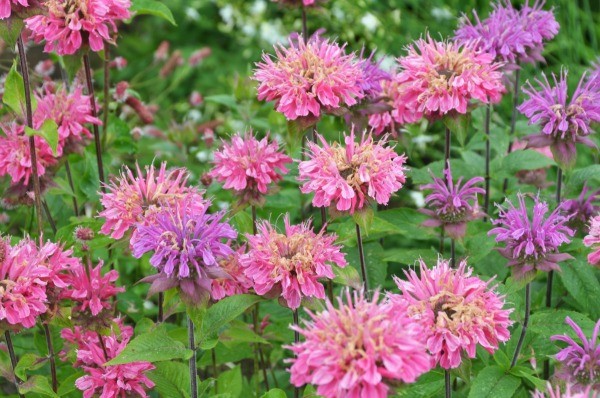

#Bee balm plant information install#
If you find your bee balm plant spreads its roots too fast and aggressive, you can install root barriers or plant your bee balm and companion plants in raised garden beds. Also known as bee balm, horsemint is native herb worth adding to your garden. This hard-working plants side hustle is insect repellant. Its prized for attracting bees and is also a popular herb widely used in traditional herbal medicine and less frequently as a culinary herb. Bee balm spreads its roots vigorously, so if you choose a slow-growing and sensitive companion, it may overcrowd it. Bee balm is a versatile perennial garden favorite that blooms in a firework of color all summer long. It grows to be 3-4 feet tall, and 2-3 feet wide.
#Bee balm plant information full#
Search for varieties with the same growing conditions that thrive in full sun and moisture-retentive yet well-drained soil. The bee balm Prarienacht variety is a perennial that produces beautiful purple flowers, that bloom from summer through early fall. While this plant can be paired with almost any vegetable and flowering plant, choosing a variety that is as assertive as bee balm is crucial. When searching for the perfect bee balm companion to plant in your garden bed, remember a few things. Both plants attract many butterflies and tolerate moist soil during hot summer days, making them ideal for rain gardens.īoth plants are safe from most diseases and aren’t prone to frequent insect pest infestations. Since bee balm is so aggressive, it can pair nicely with Eupatorium, which can handle the vigorously-spreading bee balm. The leaves and stems of this plant are purple-brown and have a pungent smell when crushed. Hardy perennial Black-eyed Susan can thrive in a range of environments. Plant these in flower gardens, as a garden border or in a garden planter.Eupatorium species is a perfect companion plant for bee balm, mainly because the plant is much taller but tolerant of the same conditions. Tomato Black-eyed Susan as Bee Balm Companion The first member of the best bee balm companion plants is the Black-eyed Susan. if you want its continuous presence in your yard every summer, you might have to divide an existing plant, or start a new plant from seeds every couple of years although chances are that if you don’t remove the seed heads, volunteer. It is a perennial albeit a short-lived one. The plants will grow from 10 to 24 inches tall and up to 28 inches wide.īee balm will attract hummingbirds, pollinating insects and other insects that control garden pests. Bee balm, also called monarda or bergamot, is a classic garden perennial that’s a must-have for cottage, cutting and pollinator gardens, as well as naturalised areas. Bee Balm Care Spotted bee balm is a native plant that offers gardeners maximum pollinator value for minimum effort. Bee balm is winter hardy in growing zones 4 to 8. The soil needs to be moist but well drained. Plants growing in shaded areas will spread horizontally and won’t produce as many flowers. They combine well with other perennials and grasses, especially in prairie-style plantings. The wild flowers are single, but some cultivated forms have double flowers. Monarda Botanical name: Monarda Common name: bee balm, bergamot, Oswego tea With aromatic foliage and flowers over a long period in summer, bergamots are ideal for any mixed or herbaceous summer border.


The mint plant is easily the most versatile plant on this. The bee balm is also an attractive plant that comes in various vibrant colours like purple, red, pink, white etc. The flowers are tubular, and come in a variety of colors including pink, lilac, purple and red. The bee balm is also known as the Monarda or the horsemint plant and has leaves that produce oils which deter mosquitoes and other invasive insects. It can even be grown in containers: all you need is a large 5-gallon pot and some potting soil. Native to North America, the bee balm plant blooms from late spring into late summer in shades of pink, lavender, purple, white and red. Bee Balm is native to Eastern North America and Canada. Bee balm thrives in USDA plant hardiness zones 4 through 9. Description Container Sizes Warranty Information Shipping Information Partial Sun to Full Sun (At Least 5 Hours of Direct Sunlight) Mature Height 32 Inches Mature Spread 36 Inches Growing Zones 4 - 8 Use As A Filler In Containers Upscale Red Velvet Bee Balm has giant, deep cherry red blooms that attract any pollinator in the area.

Bergamot was inspired by the fragrance of the leaves, which is very similar to bergamot orange (citrus bergamia). Other common names include horsemint, oswego tea, and bergamot. Bee Balm is a flowering perennial in the genus Monarda and part of the mint family Lamiaceae.


 0 kommentar(er)
0 kommentar(er)
